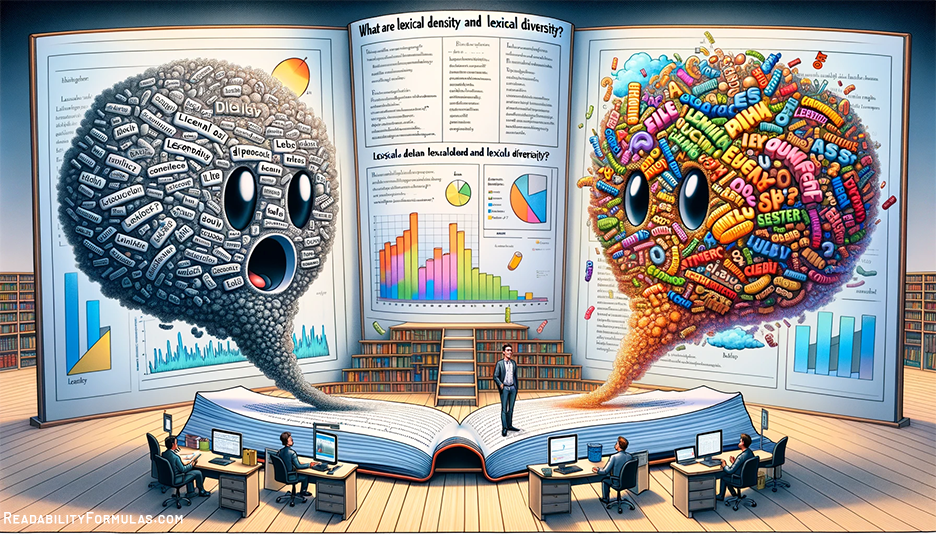 Understanding words and how they’re used is important to language studies. Two key terms that help us analyze language are “lexical density” and “lexical diversity.” Both sound complex, but don’t worry—they’re more straightforward than they seem. (Use our Lexical Density/Diversity Tool to analyze your writing)
Understanding words and how they’re used is important to language studies. Two key terms that help us analyze language are “lexical density” and “lexical diversity.” Both sound complex, but don’t worry—they’re more straightforward than they seem. (Use our Lexical Density/Diversity Tool to analyze your writing)
LEXICAL DENSITY
Purpose: Measures the proportion of content words (nouns, verbs, adjectives, adverbs) to the total number of words in a text, giving a sense of how “packed” the text is with information.
Interpretation: A higher lexical density means that most words in the text are content words. This often indicates a more informative or content-rich text. Academic or formal texts often have a higher lexical density compared to casual or conversational texts.
Lexical Density Formula =
(Total Number of Words
÷
Number of Lexical Words) × 100
Lexical words are the main content-bearing words of a language. They convey specific meanings and are not determined by sentence structure. Lexical words include nouns, verbs, adjectives, and adverbs. Example: In the sentence “The quick brown fox jumps over the lazy dog”, the lexical words are “quick”, “brown”, “fox”, “jumps”, “over”, “lazy”, and “dog”.
Function words, often referred to as “grammar words” or “structure words,” have little lexical meaning or content on their own but serve to express grammatical relationships between other words within a sentence.
Function words include:
- Prepositions: These words indicate relationships in time, space, or direction. Examples: “in,” “on,” “at,” “by,” “with,” and “about.”
- Articles: These specify nouns. Examples: “a,” “an,” and “the.”
- Conjunctions: They connect words, phrases, or clauses. Examples: “and,” “but,” “or,” “although,” and “because.”
- Auxiliary Verbs: These “helper” verbs combine with main verbs to create verb tenses, voices, or moods. Examples: “be,” “have,” “do,” “can,” “will,” “should,” and “might.”
- Particles: Words that don’t fit neatly into the above categories but still function in a grammatical capacity. Examples: “not” in negations and “up” in phrasal verbs like “wake up.”
- Interjections: These are often emotional utterances that are more about expressing feeling than meaning, like “oh,” “uh,” “well,” and “hmm.”
- * Pronouns: These words replace nouns to avoid repetition. Examples: “he,” “she,” “it,” “they,” “him,” “her,” and “us.” While pronouns have more semantic weight than many function words, they are sometimes grouped with function words due to their grammatical roles.
To calculate lexical density:
- Count repeated lexical words. If a lexical word appears five times, count that word five times.
- Do not count function words (like “and,” “the,” “is,” etc.) as lexical words.
- Do count all function words as part of total number of words.
:: Lexical Density Scale ::
High Lexical Density (60% – 100%)
80%-100%: Extremely high density. Rare in most types of texts. Could indicate a very technical or specialized text with little filler or function words. Writing Style: Highly technical, specialized, and devoid of excess filler words. Heavy use of jargon and specific terminology. Matching Texts: Scientific journals, legal contracts, technical manuals, patent documentation, dense legal or philosophical texts.
Popular books/magazines with extremely high lexical density:
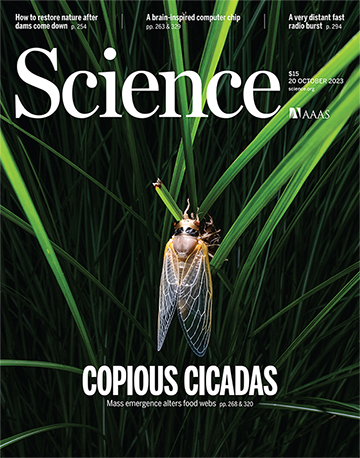 “The Structure of Scientific Revolutions” by Thomas S. Kuhn: Kuhn’s work is a seminal text in the philosophy of science. It introduces many new terms and concepts related to scientific paradigms, making it dense in terms of terminology.
“The Structure of Scientific Revolutions” by Thomas S. Kuhn: Kuhn’s work is a seminal text in the philosophy of science. It introduces many new terms and concepts related to scientific paradigms, making it dense in terms of terminology.- “Quantum Mechanics and Path Integrals” by Richard Feynman and Albert Hibbs: Quantum mechanics is an inherently complex and specialized subject. Feynman’s approach, while enlightening to those in the field, is filled with technical jargon and intricate mathematical formulations.
- “Nature” magazine: As one of the premier scientific journals, “Nature” publishes cutting-edge research that often introduces or elaborates on niche topics, resulting in high lexical density.
- “Science” magazine: Similar to “Nature”, “Science” is a peer-reviewed journal that covers a broad array of scientific disciplines. The need to be precise and technical results in high lexical density.
- “A Course in Pure Mathematics” by G.H. Hardy: Mathematics, especially at advanced levels, has its unique language. Hardy’s work is rigorous and delves into advanced topics, using a plethora of mathematical terms and concepts.
- “The Handbook of Computational Linguistics” by Alex Clark: Computational linguistics sits at the intersection of linguistics and computer science, two fields known for their specialized terminologies. This handbook would provide a dense amalgamation of terms from both areas.
70%-79%: High density. Typically found in academic, scientific, or technical documents where information is densely packed. Writing Style: Academic and formal. Information is conveyed with precision, often with the use of domain-specific vocabulary. Matching Texts: Scholarly articles, academic textbooks, research papers in scientific and technical domains, philosophical treatises.
Popular books/magazines with high lexical density:
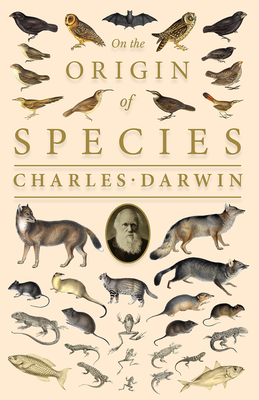 “Critique of Pure Reason” by Immanuel Kant: Kant’s magnum opus is known for its complexity and depth. He dives into the intricacies of epistemology, metaphysics, and logic. The text demands meticulous attention and employs a rich set of philosophical terminology.
“Critique of Pure Reason” by Immanuel Kant: Kant’s magnum opus is known for its complexity and depth. He dives into the intricacies of epistemology, metaphysics, and logic. The text demands meticulous attention and employs a rich set of philosophical terminology.- “On the Origin of Species” by Charles Darwin: Darwin’s revolutionary text on evolution is comprehensive, introducing the theory of natural selection and presenting an array of evidence. The thoroughness and precision of his arguments lead to a higher lexical density.
- “The Journal of Clinical Investigation”: Medical research articles are by nature dense with information. They use specialized terminology, descriptions of methodologies, and precise language to discuss findings.
- “The New England Journal of Medicine”: Like “The Journal of Clinical Investigation”, this publication is at the forefront of medical research. Articles are technical, detailed, and intended for professionals in the field.
- “The Mathematical Universe” by Max Tegmark: Tegmark’s work is a unique blend of mathematical exploration and philosophical speculation. Delving into abstract concepts requires a precise and technical vocabulary.
- “Molecular Biology of the Cell” by Bruce Alberts and colleagues: This textbook is foundational for students and professionals in cellular and molecular biology. It provides in-depth explanations of cellular processes, structures, and functions, necessitating a dense array of specialized terms.
60%-69%: Moderately high density. Often seen in specialized texts or writings that have a substantial informational content but may still incorporate some descriptive or explanatory phrasing. This can include comprehensive reports, technical manuals, and advanced educational materials. Writing Style: detailed informational content, usage of domain-specific vocabulary, and an attempt to clarify concepts without over-relying on filler words. Matching Texts: technical documentation that caters to an audience with some prior knowledge in the field; advanced textbooks used in higher education settings; and industry white papers that address a particular topic.
Popular books/magazines with moderately-high lexical density:
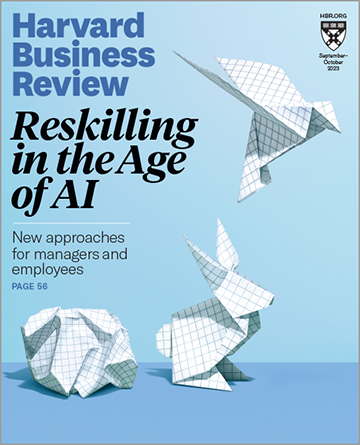 “The New Yorker” (Magazine): Known for its detailed articles on culture, technology, and politics, “The New Yorker” often dives deep into its subjects, mixing comprehensive reporting with accessible storytelling. While it maintains a level of sophistication, it’s also designed for general readership.
“The New Yorker” (Magazine): Known for its detailed articles on culture, technology, and politics, “The New Yorker” often dives deep into its subjects, mixing comprehensive reporting with accessible storytelling. While it maintains a level of sophistication, it’s also designed for general readership.- “Architectural Digest (AD) Professional”: While “Architectural Digest” does have mainstream appeal, sections or versions of the magazine go deeper into technical aspects, processes, materials, and design methodologies, thus potentially aligning more closely with the moderately high lexical density criteria.
- “Harvard Business Review (HBR)”: This magazine and its online counterpart delve deeply into management theories, business strategies, and case studies. It’s designed for business professionals and academics, hence the content often uses domain-specific vocabulary, but still maintains clarity and comprehensibility for its target audience.
- “The Selfish Gene” by Richard Dawkins: This book introduces the gene-centered view of evolution, blending rigorous scientific concepts with more general commentary.
- “The Economist” (Magazine): covers a range of topics from finance to science and technology. Articles are information-dense, relying on domain-specific vocabulary, yet aimed at a wider audience interested in global affairs.
- “Thinking, Fast and Slow” by Daniel Kahneman: The book is a blend of cognitive psychology and behavioral economics while also offering relatable examples and explanations.
Moderate Lexical Density (40% – 59%):
50%-59%: Above average density. Seen in formal writings, such as news articles, essays, and professional reports. Writing Style: Formal and structured. While there might be some use of domain-specific terms, there’s also a balance that allows a broader audience to comprehend. Matching Texts: Business reports, news articles in major publications, government white papers, formal speeches, and some specialized magazines targeting professionals.
Popular books/magazines with above average lexical density:
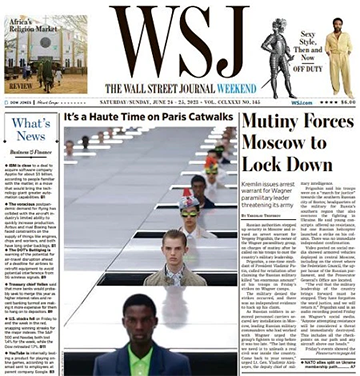 “The Wall Street Journal”: its articles maintain a formal tone while diving into the details of business strategies, market trends, and global financial shifts. The usage of business terminology is balanced by explanations, allowing a wider readership to understand the content.
“The Wall Street Journal”: its articles maintain a formal tone while diving into the details of business strategies, market trends, and global financial shifts. The usage of business terminology is balanced by explanations, allowing a wider readership to understand the content.- “1984” by George Orwell: Orwell’s dystopian masterpiece is more than just fiction. It delves into deep political and sociological themes, using a structured and formal language that reflects the control and surveillance present in the novel’s setting.
- “The Atlantic” magazine: This magazine covers a vast array of topics, from politics to culture to technology. Its essays are in-depth and insightful, written with a formal tone but always aiming for clarity and comprehension.
- “The Economist”: Its articles, while dense with global information, are structured to be concise and informative, making it accessible to those without specific expertise in every topic it covers. The tone is formal, reflecting its audience of professionals and informed readers.
- “The Federalist Papers” by Alexander Hamilton: a collection of essays written about the importance and necessity of the U.S. Constitution. The language is formal, dense, and structured, reflecting the serious nature of the political discourse of the time.
- “Guns, Germs, and Steel” by Jared Diamond: Diamond explorations into societal development is academically grounded yet strives for accessibility. Its formal style and intricate arguments place it in the above-average lexical density category.
40%-49%: Average density. General prose, such as fiction, general non-fiction, and some conversational content. Writing Style: Semi-formal. These texts strike a balance between information delivery and readability, often using a mix of varied vocabulary and commonly used words. Matching Texts: Novels, mainstream magazines, general non-fiction books, newspaper editorials, blog posts on specific subjects.
Popular books/magazines with average lexical density:
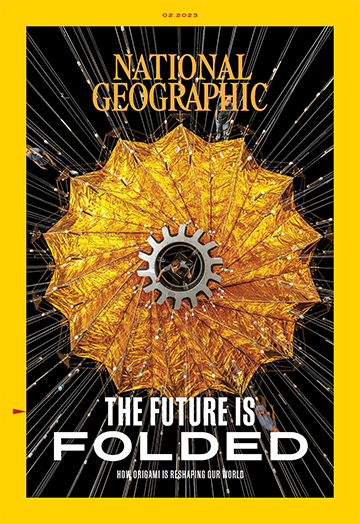 “To Kill a Mockingbird” by Harper Lee: Harper Lee’s acclaimed novel delves into profound societal issues, particularly racism, but is presented through the innocent lens of Scout Finch, a young girl. The narrative approach, combined with dialogue and description, leads to an average lexical density.
“To Kill a Mockingbird” by Harper Lee: Harper Lee’s acclaimed novel delves into profound societal issues, particularly racism, but is presented through the innocent lens of Scout Finch, a young girl. The narrative approach, combined with dialogue and description, leads to an average lexical density.- “TIME” magazine: TIME provides coverage on a wide variety of topics from global news to entertainment. While articles are often written for a general readership, they do utilize domain-specific vocabulary when diving into particular subjects.
- “The Da Vinci Code” by Dan Brown: Brown’s novel, while being a thriller, weaves in art history, religion, and symbology. The mix of dialogue, narration, and exposition ensures a balance between general language and specialized terms.
- “National Geographic” magazine: National Geographic traverses topics from environmental science to anthropology. Although articles dive deep into their subjects, they are written to be engaging and accessible to the general public, hence the average lexical density.
- “Pride and Prejudice” by Jane Austen: Austen’s novel revolves around relationships, society, and morality. Her writing includes both intricate descriptions and dialogue, creating a balance between specialized vocabulary (pertaining to the era and societal norms) and more general language.
- “Rolling Stone” magazine: Known for covering music, pop culture, and occasionally politics, Rolling Stone’s articles strike a balance. There’s a blend of formal reviews, artist interviews, and more casual pieces.
Low Lexical Density (0% – 39%):
30%-39%: Below average density. Could be seen in more conversational or dialogue-heavy texts. Writing Style: Conversational and narrative-driven. The text might focus more on dialogue, storytelling, or expressing personal viewpoints. Matching Texts: Fiction that is dialogue-heavy, scripts for movies or TV dramas, personal essays, casual blog entries.
Popular books/magazines with below average lexical density:
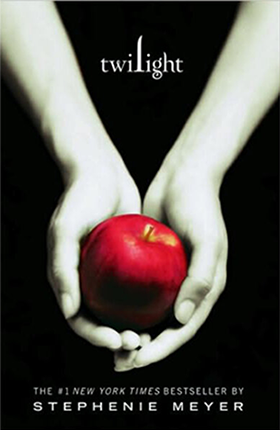 “Catcher in the Rye” by J.D. Salinger: Salinger’s novel is narrated by Holden Caulfield, a disillusioned teenager. The book captures Holden’s inner monologues and interactions, which are filled with colloquialisms, repeated phrases, and the casual language of a young adult. This makes the text more conversational and less dense lexically.
“Catcher in the Rye” by J.D. Salinger: Salinger’s novel is narrated by Holden Caulfield, a disillusioned teenager. The book captures Holden’s inner monologues and interactions, which are filled with colloquialisms, repeated phrases, and the casual language of a young adult. This makes the text more conversational and less dense lexically.- “The Fault in Our Stars” by John Green: his contemporary novel is centered around two teenagers dealing with cancer and love. Given the age of the protagonists and the narrative style, there’s a lot of dialogue and first-person reflection, leading to a lower lexical density.
- “People” magazine: People magazine is known for its celebrity interviews, human-interest stories, and pop culture coverage. The language is casual and accessible, aiming to appeal to a wide readership.
- “Twilight” by Stephenie Meyer: As a young adult fiction novel, Twilight contains a mix of narrative descriptions and dialogue. The language is geared toward a younger audience and is often emotionally-driven, focusing on the relationships and inner struggles of the characters.
- “Speak” by Laurie Halse Anderson: This novel, centered on a high school student dealing with trauma, is narrated in the first person. The text captures the internal thoughts and emotions of its young protagonist, using a language that is genuine to her age and experiences.
- “Us Weekly” magazine: Similar to “People”, “Us Weekly” covers celebrity news and gossip. The stories are written in a relaxed, informal style to engage readers without overwhelming them with technical details or complex language.
20%-29%: Low density. Typical of casual conversations where function words (“is”, “and”, “the”, etc.) are prevalent. Writing Style: Very informal. Relies heavily on common function words and colloquial expressions. The primary focus is on relatability rather than detailed information conveyance. Matching Texts: Transcripts of casual conversations, children’s basic reading materials, some informal vlogs, chat logs from messaging apps.
Popular books/magazines with low lexical density:
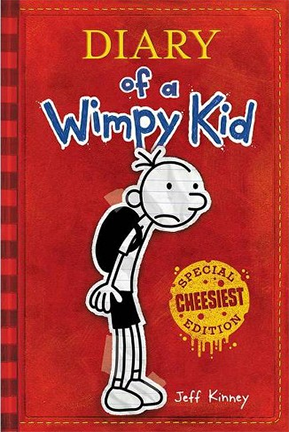 “The Perks of Being a Wallflower” by Stephen Chbosky: Written in a letter format, this novel allows the protagonist to converse directly with the reader, resulting in an intimate and personal voice. The language is informal and reflective of a teenager’s thoughts, concerns, and everyday experiences, which contributes to the lower lexical density.
“The Perks of Being a Wallflower” by Stephen Chbosky: Written in a letter format, this novel allows the protagonist to converse directly with the reader, resulting in an intimate and personal voice. The language is informal and reflective of a teenager’s thoughts, concerns, and everyday experiences, which contributes to the lower lexical density.- “Texts from Last Night” (website): This website compiles humorous text message exchanges, reflecting actual conversations between people. Naturally, these conversations are spontaneous, casual, and filled with colloquialisms, leading to a lower lexical density.
- “Diary of a Wimpy Kid” by Jeff Kinney: Presented as a journal, this series offers the perspectives and musings of a middle schooler. The language is straightforward and casual, consistent with the voice of a young adolescent.
- “BuzzFeed” articles: While BuzzFeed does offer a range of content, many of its articles, particularly those that are meant for entertainment like quizzes or listicles, are written in a relaxed and informal style. Such articles often utilize colloquial language, memes, and pop culture references, which can result in a lower lexical density.
- “Goosebumps” series by R.L. Stine: Targeted primarily at middle-grade readers, the Goosebumps series, while thrilling, uses a simpler language structure and often revisits certain themes and motifs, leading to repetitive phrasing and a lower lexical density.
- “Cosmopolitan” magazine: While the magazine covers a range of topics, certain sections, especially those focusing on personal anecdotes, confessions, or casual advice, utilize a more relaxed and conversational tone, leading to a lower lexical density.
0%-19%: Extremely low density. Rare in written texts. Might be seen in very informal or repetitive spoken exchanges. Writing Style: Extremely informal, simplistic, or repetitive. This style often prioritizes rhythm, mood, or basic communication over information density. Matching Texts: Basic language learning materials, children’s rhymes, repetitive song lyrics, extremely casual or playful social media posts.
Popular books/magazines with extremely low lexical density:
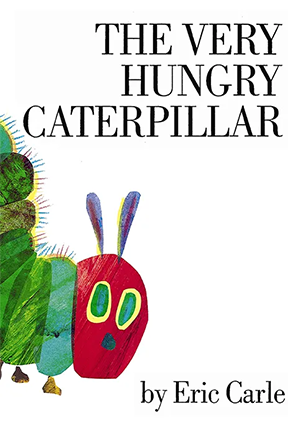 Children’s songbooks: Songs for children are often characterized by repetition, both for the sake of rhythm and to make them memorable. They often involve simple structures like “The wheels on the bus go round and round” which are designed for easy singing and recognition.
Children’s songbooks: Songs for children are often characterized by repetition, both for the sake of rhythm and to make them memorable. They often involve simple structures like “The wheels on the bus go round and round” which are designed for easy singing and recognition.- “Brown Bear, Brown Bear, What Do You See?” by Bill Martin Jr. and Eric Carle: This beloved children’s book uses a repetitive structure to introduce children to different animals and colors. Its patterned and predictable text aids in language acquisition for young readers.
- “See Spot Run”: One of the iconic early readers, this book uses minimal vocabulary to help children practice their reading skills. The repetition of basic words (“See Spot. See Spot run.”) ensures young readers can recognize and pronounce them with confidence.
- Simple language flashcards: Flashcards for early language learners typically focus on fundamental words, with one word or a short phrase per card. They’re designed to introduce new vocabulary in a straightforward and memorable manner.
- “Goodnight Moon” by Margaret Wise Brown: This classic bedtime story features a soothing, rhythmic narrative that bids goodnight to various items in a room. The language is simple, with repetitive structures that create a calming effect suitable for bedtime.
- “The Very Hungry Caterpillar” by Eric Carle: This children’s story is both educational and entertaining, teaching days of the week, foods, and the life cycle of a butterfly. Its repetitive nature (“But he was still hungry.”) and simple language make it accessible and enjoyable for young readers.
Lexical density can vary based on the language, genre, author’s style, or specific intent behind a text. For example, a poem might have a different lexical density than a textbook, even if both are expertly crafted for their respective audiences.
LEXICAL DIVERSITY
- Purpose: Measures the variety of different words used in a text, indicating how varied or repetitive the vocabulary is.
- Interpretation: A higher Type-Token Ratio (TTR) means the writer is using a wider variety of words, suggesting a richer vocabulary. A lower TTR indicates more repetition of the same words. TTR is sensitive to text length—longer texts score lower because the writer has more opportunities to repeat words.
LEXICAL DIVERSITY FORMULA =
Total Number of Words (Tokens)
÷
Number of Different Words (Types) x 100
“Different Words” refers to the number of unique words. Example: In the sentence “The dog chased the cat, but the cat was too fast for the dog“, even though the word “the” appears four times and “dog” and “cat” appear twice each, they each only count as one. The number of different words in this sentence would be: “the”, “dog”, “chased”, “cat”, “but”, “was”, “too”, “fast”, and “for”—a total of 9 different words.
To calculate lexical diversity:
- Number of Different Words (Types): count each word only once, including function words.
- Total Number of Words (Tokens): count every word, including function words and repeated words.
:: Lexical Diversity Scale ::
High Lexical Diversity (60% – 100%):
80%-100%: Extremely high diversity. We usually see high TTR in short texts, as it’s challenging to maintain this level of diversity in longer writings. Writing Style: Highly poetic, experimental, or abstract. Writers in this range prioritize unique word choices and avoid repetition. Types of Texts: Poetry, experimental prose, abstract art critiques, and some types of flash fiction.
Popular books/magazines with extremely high lexical diversity:
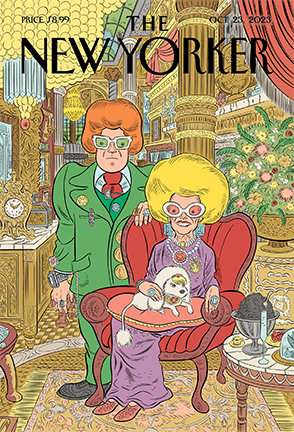 Poetry Collections (e.g., “The Waste Land” by T.S. Eliot): Poetry, especially modernist pieces like Eliot’s, is rich in vocabulary. The imagery, metaphors, and compact nature of poems like “The Waste Land” lead to a higher TTR.
Poetry Collections (e.g., “The Waste Land” by T.S. Eliot): Poetry, especially modernist pieces like Eliot’s, is rich in vocabulary. The imagery, metaphors, and compact nature of poems like “The Waste Land” lead to a higher TTR.- Short stories (e.g., “The Complete Stories” by Flannery O’Connor): O’Connor’s stories, rich in detail and nuanced characterization, ensure a varied vocabulary. Their brevity aids in keeping the TTR high.
- “Aesop’s Fables”: Each fable is not only concise but also distinct from the others. This collection of moral stories uses a variety of characters and settings, ensuring a diverse vocabulary.
- “The New Yorker” (specific short fiction sections): Fictional pieces in “The New Yorker” often exhibit an exquisite quality of language. Being short stories, they encapsulate rich details within a limited space, promoting a high TTR.
- “Jabberwocky” by Lewis Carroll: Carroll’s poem is a perfect example of high lexical diversity, given its playful and inventive use of language. The made-up words alongside conventional vocabulary make it a unique piece in terms of TTR.
- “Ulysses” by James Joyce: This modernist epic is notorious for its experimental prose and stream-of-consciousness style. Joyce’s linguistic creativity and the novel’s episodic nature allow for a diverse range of vocabulary.
70%-79%: High diversity. Texts with this range use a wide range of vocabulary, covering varied topics or using rich descriptions. Writing Style: Descriptive and diverse, often employing a rich array of vocabulary and metaphors. Types of Texts: Literary fiction, travel writing, high-quality feature journalism, and descriptive non-fiction.
Popular books/magazines with high lexical diversity:
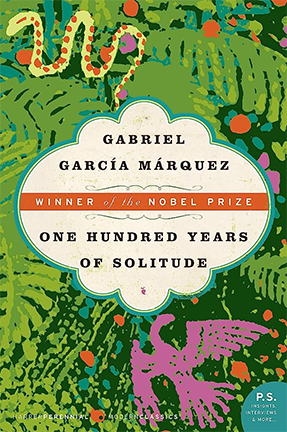 “One Hundred Years of Solitude” by Gabriel García Márquez: This magnum opus of magical realism is rife with detailed character studies, enchanting descriptions, and a plethora of events that span over a century in the town of Macondo. Márquez’s narrative weaves generations of the Buendía family, ensuring a high lexical diversity.
“One Hundred Years of Solitude” by Gabriel García Márquez: This magnum opus of magical realism is rife with detailed character studies, enchanting descriptions, and a plethora of events that span over a century in the town of Macondo. Márquez’s narrative weaves generations of the Buendía family, ensuring a high lexical diversity.- “In Search of Lost Time” by Marcel Proust: Proust’s seminal work is known for its meticulous introspection, extensive character studies, and profound descriptions of time, memory, and experience. Its exhaustive and intricate detailing naturally results in high lexical diversity.
- “The Book of Disquiet” by Fernando Pessoa: Pessoa’s posthumously-published collection is a meditative exploration of the human psyche, full of philosophical reflections and varying musings. The array of themes and tones ensures a diverse vocabulary.
- “The New York Review of Books”: Covering a vast range of topics from literature to politics, this publication consistently presents deep-dives into its subjects. The reviews and essays are not only analytical but also diverse in their vocabulary.
- “Gravity’s Rainbow” by Thomas Pynchon: Pynchon’s narrative, known for its complexity and the vast range of characters and themes, is a tapestry of varied vocabulary. Its intricate plots and subplots guarantee high lexical diversity.
- “The Atlantic” magazine (certain in-depth features): While “The Atlantic” covers various topics, its in-depth features delve deep into their respective subjects. The analytical nature and wide coverage of topics result in rich vocabulary usage.
60% – 69%: Moderate. The writer uses a balance between varied vocabulary and repeated words. This range is common in general texts, novels, or everyday communication. Writing Style: Well-rounded with varied vocabulary but without excessive repetition. It balances unique terms and common language. Types of Texts: General novels, essays, some newspapers or magazine features, and personal narratives.
Popular books/magazines with moderate lexical diversity:
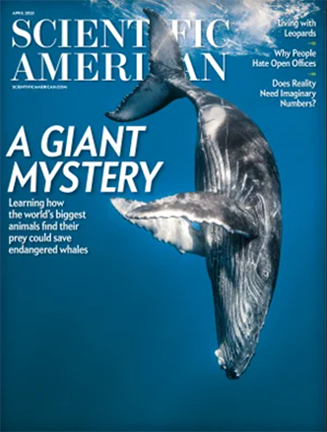 “The Odyssey” by Homer (translated by Robert Fagles): As one of the most celebrated epics, “The Odyssey” is rife with various adventures and characters. However, its format as an epic poem means recurring epithets and phrases (like “rosy-fingered dawn”) appear throughout the text.
“The Odyssey” by Homer (translated by Robert Fagles): As one of the most celebrated epics, “The Odyssey” is rife with various adventures and characters. However, its format as an epic poem means recurring epithets and phrases (like “rosy-fingered dawn”) appear throughout the text.- “Newsweek” magazine: As a general news publication, “Newsweek” presents diverse subjects. While it introduces various topics in each issue, the magazine’s consistent journalistic language ensures a moderate lexical diversity.
- “Brave New World” by Aldous Huxley: Huxley’s dystopian world introduces readers to new societal concepts and terminologies. However, the consistent revisiting of core themes and principles of the society ensures a balance in lexical density.
- “Cosmopolitan” magazine: “Cosmopolitan” offers a blend of topics from beauty to relationships. While each article might present new ideas or trends, there is a foundational set of themes and terms that recur throughout the magazine.
- “The Brothers Karamazov” by Fyodor Dostoevsky: Dostoevsky’s magnum opus delves deep into the human psyche, family dynamics, and spiritual quests. With its rich character set and discussions, it introduces diverse vocabulary. However, certain thematic elements like spirituality and morality are revisited, striking a balance in lexical density.
- “Scientific American” magazine: While it covers a wide array of scientific topics, certain terms and concepts can recur frequently, especially in issues focusing on a specific theme or field of study.
Moderate Lexical Diversity (40% – 59%):
50%-59%: Above average diversity. These texts have a good variety of vocabulary but also exhibit some repetition. Many well-balanced writings, like essays or articles, fall in this range. Writing Style: Balanced, employing a mix of common and diverse vocabulary. Repetition is present but not dominant.
Popular books/magazines with above average lexical diversity:
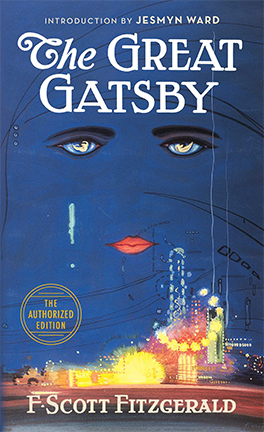 “The Great Gatsby” by F. Scott Fitzgerald: Fitzgerald’s classic provides detailed descriptions of the Roaring Twenties and its glamorous excesses. However, the book revolves around a few core themes like the American Dream and decadence, which brings about a balance in lexical density.
“The Great Gatsby” by F. Scott Fitzgerald: Fitzgerald’s classic provides detailed descriptions of the Roaring Twenties and its glamorous excesses. However, the book revolves around a few core themes like the American Dream and decadence, which brings about a balance in lexical density.- “The Economist” magazine: Known for its comprehensive coverage of global events, “The Economist” dives deep into various topics. However, its signature style and approach to subjects ensure a consistent and moderate lexical density.
- “Pride and Prejudice” by Jane Austen: Austen’s romance novel presents varied character dialogues that touch upon societal norms, class distinctions, and personal relationships. The consistent themes and the narrative’s focus help balance out the diversity in vocabulary.
- “National Geographic” magazine: With articles spanning from culture to wildlife, “National Geographic” offers a wide range of topics. However, each issue often has a thematic focus, ensuring repeated terms related to that theme, thus maintaining a moderate lexical density.
- “The Catcher in the Rye” by J.D. Salinger: Salinger’s novel is characterized by its colloquial tone. While it offers a diverse range of teenage reflections, certain themes like alienation and identity are frequently revisited, keeping the lexical diversity in check.
- “TIME” magazine: “TIME” offers a broad spectrum of news, from politics to culture. While it brings diverse topics to the forefront, certain recurrent themes and a unified journalistic tone ensure a balanced lexical diversity.
40%-49%: Average diversity. A lot of general prose, such as fiction and non-fiction, may fall into this category, striking a balance between introducing new terms and reinforcing existing ones. Writing Style: More conventional and may lean on a set of core vocabulary related to the text’s theme or subject. Types of Texts: Textbooks, mainstream non-fiction, genre fiction (like romance or mystery), and general news articles.
Popular books/magazines with average lexical diversity:
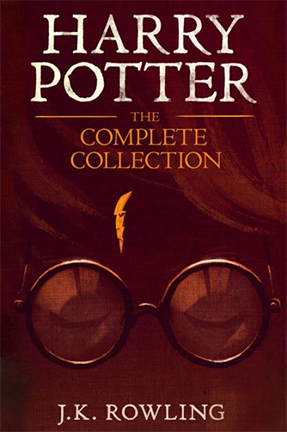 “Harry Potter” series by J.K. Rowling: Rowling’s universe is rich with fantastical terminology, but the recurrence of character names, places, and key themes throughout the series ensures that certain words appear frequently, thus fitting the average lexical diversity range.
“Harry Potter” series by J.K. Rowling: Rowling’s universe is rich with fantastical terminology, but the recurrence of character names, places, and key themes throughout the series ensures that certain words appear frequently, thus fitting the average lexical diversity range.- “Forbes” magazine: While “Forbes” provides a deep dive into the business world, the recurring focus on key industry leaders, terminologies, and popular market trends brings in a level of repetitiveness.
- “To Kill a Mockingbird” by Harper Lee: Harper Lee’s classic novel provides a mix of deep thematic explorations and repetitive elements, such as character dialogues and central motifs, which keeps the lexical density in the average range.
- “People” magazine: The world of celebrity news does introduce new stories and subjects, but recurring themes and the consistent focus on popular celebrities make for some repetitiveness in terms.
- “Lord of the Rings” by J.R.R. Tolkien: Tolkien’s epic offers a deep lore and many unique terms related to its world. However, key characters, locations, and themes are revisited repeatedly throughout the series, balancing out the density.
- “Vogue” magazine: While “Vogue” introduces readers to the latest in fashion and design, certain foundational elements of style and regularly featured designers or models make the content familiar and repetitive at times.
Low Lexical Diversity (0% – 39%):
30%-39%: Below average diversity. The text focuses on a specific topic with repeated terminology; or the text is aimed at younger readers. Writing Style: Simplified, often relying on a limited set of vocabulary, perhaps due to the specialized nature of the topic or the intended audience. Types of Texts: Instruction manuals, children’s early reading books, basic guides, and some types of specialized reports.
Popular books/magazines with below average lexical diversity:
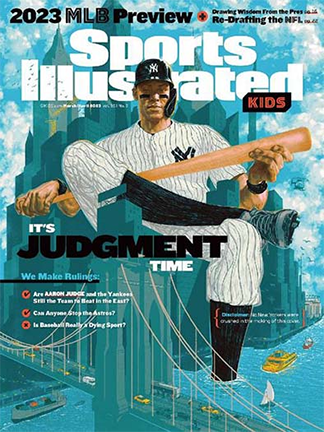 “Twilight” series by Stephenie Meyer: Meyer’s romantic supernatural saga revolves around a set of core characters and themes. The vocabulary often leans on emotions, relationships, and the supernatural elements, leading to repeated terms and descriptions.
“Twilight” series by Stephenie Meyer: Meyer’s romantic supernatural saga revolves around a set of core characters and themes. The vocabulary often leans on emotions, relationships, and the supernatural elements, leading to repeated terms and descriptions.- “Us Weekly” magazine: This celebrity-focused magazine centers on the lives and events of public figures. The gossipy nature and frequent revisit to popular celebrities can limit the diversity of terms used.
- “Goosebumps” series by R.L. Stine: Written for pre-teens and younger teenagers, the “Goosebumps” series introduces suspense and horror while maintaining a simplicity in language to cater to its target audience.
- “Diary of a Wimpy Kid” series by Jeff Kinney: Told from the perspective of a middle-school student, the series focuses on day-to-day life and challenges. The conversational tone and recurring school and family-themed scenarios result in a moderate use of vocabulary.
- Children’s picture books (e.g., “Goodnight Moon” by Margaret Wise Brown): Designed for young readers, these books employ simple structures and repetitive phrases to enhance memory and understanding. “Goodnight Moon,” for instance, revisits several items in the room as part of its soothing nighttime narrative.
- “Sports Illustrated for Kids”: Tailored for younger sports enthusiasts, this magazine simplifies complex topics to make them more accessible. While it covers various sports, the language remains direct and clear.
20%-29%: Low diversity. We might see low diversity is texts with a lot of repetition for emphasis or in texts in which the writer intentionally limits vocabulary, such as beginner’s reading materials. Writing Style: Highly repetitive and simplistic. Often intentionally constrained in vocabulary. Types of Texts: Beginner’s reading materials, children’s basic storybooks, and some types of language learning texts.
Popular books/magazines with low lexical diversity:
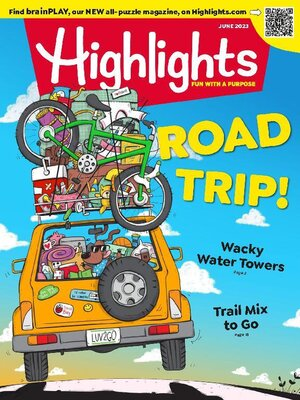 Early reading materials: These books are essential tools for children learning to read. The vocabulary is minimal, and repetition is used to reinforce recognition and comprehension. They tend to revolve around daily life scenarios with straightforward actions and objects.
Early reading materials: These books are essential tools for children learning to read. The vocabulary is minimal, and repetition is used to reinforce recognition and comprehension. They tend to revolve around daily life scenarios with straightforward actions and objects.- “Reader’s Digest” (specific joke or anecdotal sections): Jokes and anecdotes in such sections are designed to be brief and comprehensible to a wide audience. As a result, they often utilize common vocabulary and may revisit similar themes, causing a reduced lexical variety.
- Language learning beginner books: Such as “First Thousand Words in Spanish”. These are structured for absolute beginners in a language. The vocabulary starts very basic, often focusing on everyday objects, colors, numbers, and simple actions. The same words can be repeated in different contexts to help with memorization.
- Simple pop song lyrics: Many pop songs are designed to be catchy and memorable. Repetitive choruses and verses using everyday language are common to make them relatable and easy for listeners to sing along.
- “Highlights for Children” magazine: tailored for kids, this magazine covers a range of topics but keeps the vocabulary suitable for young readers. Regular features, puzzles, and stories might revisit common themes and words to make them comprehensible for the targeted age group.
- Basic children’s rhymes and songs: Nursery rhymes and children’s songs use repetition for rhythm and memorability. Classic examples like “Twinkle, Twinkle, Little Star” or “Old MacDonald Had a Farm” repeat phrases and structures to create a singable, memorable pattern for kids.
0%-19%: Extremely low diversity. This is rare for texts as they would be repetitive or simplistic in content, like children’s rhymes or chants. Writing Style: Extremely limited in terms of vocabulary. Might use the same set of words repetitively. Types of Texts: Nursery rhymes, chants, certain children’s songs, and early language learning materials.
Popular books/magazines with extremely low lexical diversity:
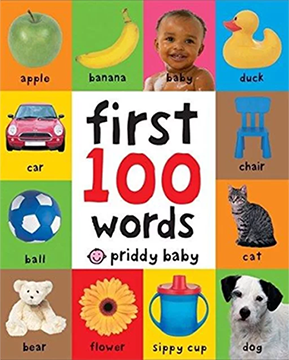 Baby’s first word books: These books are designed to introduce infants to the concept of words and their corresponding images. They usually focus on very foundational vocabulary such as “mom”, “dad”, “ball”, and “dog”, repeated across pages.
Baby’s first word books: These books are designed to introduce infants to the concept of words and their corresponding images. They usually focus on very foundational vocabulary such as “mom”, “dad”, “ball”, and “dog”, repeated across pages.- Simple board books for infants: “Pat the Bunny” and similar board books are tactile experiences combined with extremely simple language. They’re meant to be interactive for babies, focusing on sensory experiences rather than vocabulary variety.
- Repetitive children’s songs: Songs like these use repetition to create a memorable and singable pattern for kids. They have a limited set of verses that are cycled through multiple times, keeping the vocabulary range minimal.
- Flashcards for toddlers: These are designed to introduce toddlers to basic words and concepts. Each card typically has a word and an associated image. The focus is on recognition and repetition rather than vocabulary variety.
- Basic learning apps for toddlers: Similar to flashcards, these apps are designed to make learning interactive. They’ll often include activities like matching a word to an image, and they emphasize foundational vocabulary and concepts.
- Children’s chant books: Chant books provide repetitive, rhythmic phrases for children to recite. This repetition aids in memory and rhythm recognition but keeps the lexical diversity very low.
Interpret these ranges with context in mind:
- TTR is sensitive to text length. A short text can score a high TTR because repetition is limited, whereas longer texts have lower TTRs naturally.
- The purpose, audience, and genre of the text play crucial roles in its lexical diversity. For instance, a beginner’s language-learning book might have a low TTR to focus on core vocabulary.
Lexical density and diversity are like magnifying glasses for language. They allow us to zoom in on texts and understand their structure and content better. Both measures are tools, not judgments. A low or high score in either doesn’t deem a text “good” or “bad.” It merely gives insights into the text’s nature. (Use our Lexical Density/Diversity Tool to analyze your writing).




